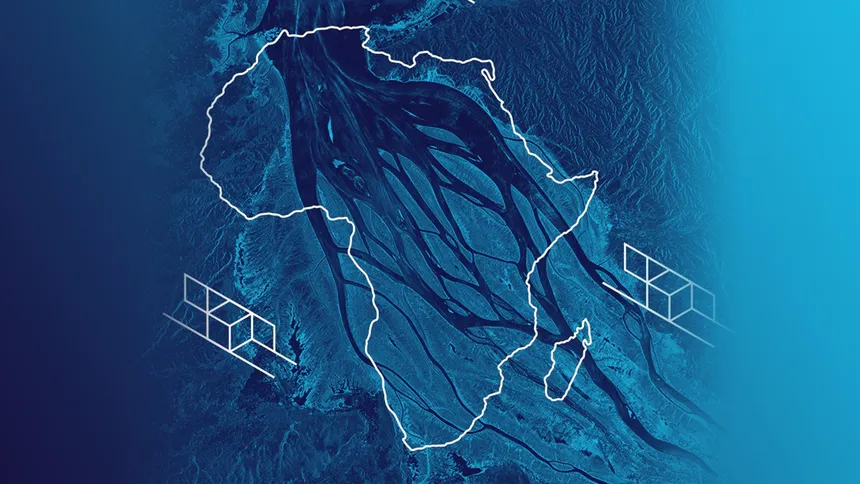The European Space Agency (ESA) recently released a breathtaking satellite image of two salty lakes in East Africa, Lake Natron in northern Tanzania and Lake Magadi in southern Kenya. The image, captured earlier this year by the Copernicus Sentinel-2 mission, is a perfect example of the striking beauty and hidden truths that can be revealed through satellite imaging. The image processing, conducted in the near-infrared channel, brings forth a wealth of information about the unique characteristics of these lakes and the ecosystems they support.
The image appears to be a work of art, with vibrant colors dancing across the digital canvas. However, these colors are not the result of artistic license, but rather a product of the specialized image processing. The ESA explains that the near-infrared channel helps to reveal different information than what would be found in a natural-color image. The heavy shades of red highlight vegetated areas, while the seasonal flowering of algae in the lakes appears green. The bright white and blue areas along the shores depict a mixture of sand, salt, and mud flats.
The image is dominated by a mixture of red and green hues, which are a direct result of the unique characteristics of the two lakes. Lake Natron, measuring 34.8 miles (56 kilometers) in length and just 9.8 feet (3 meters) in depth, is a wetland of international importance. It’s the only regular breeding area for lesser flamingos in East Africa, with an astonishing 2.5 million of them flocking to the area each year. Lake Magadi, situated in a vast depression amidst volcanic rock, is smaller than its Tanzanian counterpart but boasts a similar high salt content. In some areas, this salt content reaches an astonishing 131 feet (40 meters) thick.

Satellite Images reveal Hidden Beauty of East African Lakes
Both lakes are subject to unique environmental conditions that have shaped their ecosystems over time. The image provides a Look into the rich biodiversity of these lakes, which are home to a variety of flora and fauna. The lakes’ unique characteristics make them a fascinating subject for scientists and environmentalists. The release of this image is a testament to the power of satellite technology and the importance of understanding our planet’s ecosystems.
The Copernicus Programme, of which Sentinel-2 is a part, brings together a vast array of information gathered from environmental satellites, air and ground stations, and sensors to build a comprehensive understanding of the Earth’s health. The programme’s mission is to provide data and information to support decision-making and policy-making in areas such as climate change, agriculture, and natural disasters. The Sentinel-2 mission, in particular, supplies the coverage and data delivery for the Copernicus Programme.
The image of Lake Natron and Lake Magadi is a powerful tool for scientists, environmentalists, and policymakers. It provides valuable insights into the unique characteristics of these lakes and the ecosystems they support. By exploring images like this, we’re reminded of the beauty and complexity of our world and the importance of preserving it for future generations. Whether you’re an environmentalist, a scientist, or simply a curious individual with a love for space exploration, this image is sure to leave you in awe of the natural world.
The stunning satellite image of Lake Natron and Lake Magadi is a testament to the power of satellite technology and the importance of understanding our planet’s ecosystems. It highlights the beauty and complexity of our world and the importance of preserving it for future generations. The image is not only a work of art but also a valuable tool for scientists and environmentalists to gain a deeper understanding of the natural world.









































